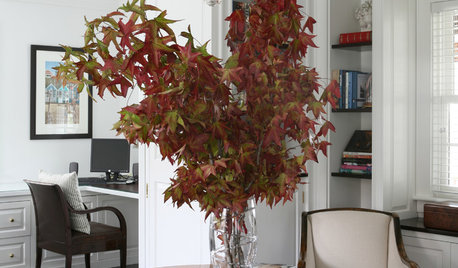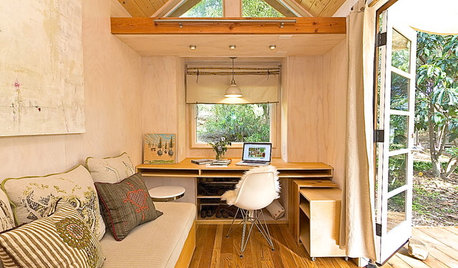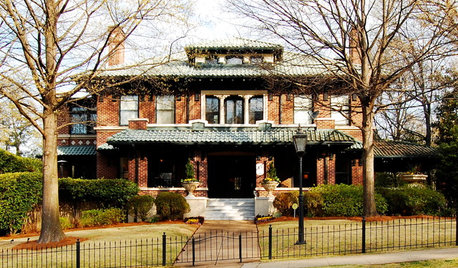Red leaves on blueberry
ahajmano
10 years ago
Related Stories

EDIBLE GARDENSSummer Crop: How to Grow Blueberries
Plant blueberries in spring or fall for garden beauty through three seasons — and a sweet superfood in summer
Full Story
GARDENING GUIDESGreat Design Plant: Grow Blueberries for Their Fruit and More
Eastern gardeners should consider growing blueberry plants for their delicious fruits, bee-friendly spring blooms and brilliant fall foliage
Full Story
DECORATING GUIDES9 Easy Ways to Decorate With Autumn Leaves
Give your home a burst of color that can be used Halloween through Thanksgiving
Full Story
GARDENING GUIDESWhat's Wrong With My Plant? Leaves Often Hold the Clues
Learn how to identify common plant ailments by reading their leaves
Full Story
REMODELING GUIDESInterior Brick: Paint it or Leave It?
Here's how to know if covering that brick is a sin or solution
Full Story
FALL GARDENING5 Ways to Put Fall Leaves to Work in Your Garden
Improve your soil and yard the organic way with a valuable garden booster that grows on trees
Full Story
LAUNDRY ROOMSRoom of the Day: The Laundry Room No One Wants to Leave
The Hardworking Home: Ocean views, vaulted ceilings and extensive counter and storage space make this hub a joy to work in
Full Story
DECLUTTERINGDownsizing Help: Choosing What Furniture to Leave Behind
What to take, what to buy, how to make your favorite furniture fit ... get some answers from a homeowner who scaled way down
Full Story
LIFEYou Said It: ‘I’m Never Leaving’ and More Houzz Quotables
Design advice, inspiration and observations that struck a chord this week
Full Story
ARCHITECTUREStates of Style: Alabama’s Icons Leave Their Mark
In the first of a new series, discover the natural beauty, the architectural icons and some of our favorite homes deep in the heart of Dixie
Full StoryMore Discussions








bamboo_rabbit
ahajmanoOriginal Author
Related Professionals
Carlisle Landscape Architects & Landscape Designers · Ballenger Creek Landscape Architects & Landscape Designers · Ballwin Landscape Architects & Landscape Designers · Simi Valley Landscape Architects & Landscape Designers · Matthews Landscape Contractors · El Reno Landscape Contractors · Flagstaff Landscape Contractors · Hawthorne Landscape Contractors · Longmont Landscape Contractors · Morrisville Landscape Contractors · New Cassel Landscape Contractors · New Providence Landscape Contractors · Norwalk Landscape Contractors · Wallingford Landscape Contractors · Lauderdale Lakes Landscape Contractorsblueboy1977
ahajmanoOriginal Author
ahajmanoOriginal Author
blueboy1977
bamboo_rabbit
blueberryhillsfarm
ericwi
jean001a
ahajmanoOriginal Author
blueboy1977
Ernie
franktank232
ahajmanoOriginal Author
Ernie
ahajmanoOriginal Author
drew51 SE MI Z5b/6a
jean001a
blueboy1977
Ernie
blueboy1977
ahajmanoOriginal Author
ahajmanoOriginal Author
blueberryhillsfarm
bamboo_rabbit
drew51 SE MI Z5b/6a
ericwi
ahajmanoOriginal Author
Ernie
edweather USDA 9a, HZ 9, Sunset 28
Krazy-in-Florida